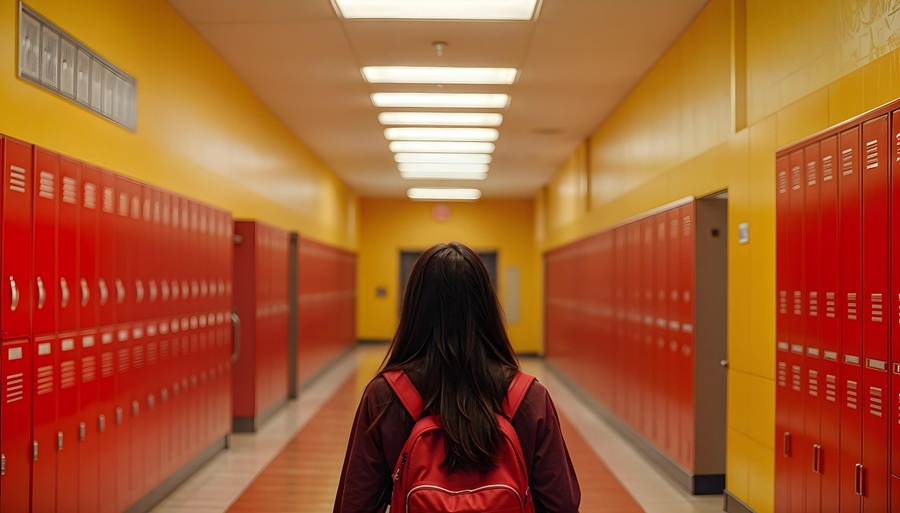- 17 de October de 2025
- No Comment
- 10 minutes read
The importance of the environment in education


The concept of environment is fundamental to understanding the existence, development, and survival of any system. This includes our students and the creative processes we seek to nurture through education. At a first approximation, the environment can be defined as the set of circumstances and social, cultural, moral, economic, and professional factors that surround a person and directly influence their condition or development. Conceptually, the environment is simply everything that is not the system itself.
For us, the environment is far more than classroom furniture. In our case, it comprises everything that is not the student when we focus on learning, and everything that is not the teacher when we focus on teaching. In education, many traditional approaches advocate placing either the student or the teacher at the centre. Yet the real key to unlocking the creative potential and adaptability of our students lies in the environment we create. Understanding the classroom as a dynamic ecosystem is essential if we are to foster the flexible thinking demanded by today’s world.
The environment: the matrix that shapes the mind
Within the educational ecosystem, interaction does not end with content. Students interact with their environment through a constant exchange of matter, energy, and information. The laws of nature and genetic codes are examples of information already present in the universe. In our context, the environment transmits not only physical facts but also information about what is valued. For instance, a defensive fence not only forces an intruder to expend energy and effort to climb it but may also involve an exchange of matter—a wound sustained in the attempt—and conveys information: it suggests that something valuable or desirable lies within. Difficulties in education are like such fences, and of course, they are not the same for everyone.
Adaptability and anticipation: the survival of flexible thought
Paraphrasing Jorge Wagensberg (2004), the great challenge lies in how our students respond when uncertainty tightens its grip—that is, how they face new problems in a world where knowledge evolves at great speed. Systems survive and progress through adaptation. As Charles Darwin argued, it is not the strongest species that survive, but those best able to adapt to change. In times of great uncertainty, generalist thinkers are more likely to thrive than specialists. What, then, are we cultivating in our classrooms?
When faced with environmental uncertainty, systems tend to follow two main strategies:
- Anticipation and adaptation. These form the very essence of creativity and flexible thinking. Creative education rests upon anticipation, which allows us to imagine future scenarios and prepare potential responses, and upon adaptation, which gives us the capacity to adjust those responses as reality evolves. Together, these abilities nourish flexible thinking and turn learning into a living, transformative process rather than a static one.
- Robustness and immunity. In the case of rational (human) systems, growing social and educational complexity brings with it the need to seek robustness and immunity in the face of change. This may involve developing strategies and methodologies that motivate students—and, of course, teachers—rendering them immune to legislative changes, while sustaining a commitment to educational quality and the pursuit of justice and equity.
Constant innovation is impossible. What is needed are lasting, sustainable solutions—particularly in contexts where teachers deliver more than twenty hours of lessons per week to highly complex groups. Presenting content in ways that are diverse, resilient, and robust against legislative changes is a genuine pedagogical challenge for teachers whose time is limited and whose daily routines can easily be consumed by the demands of everyday work.
Designing the environment for creativity
The creative process is, at heart, the act of designing or solving a problem—and to do so, the environment is an indispensable complement to the system being designed. Every dimension—spatial, temporal, legal, economic, social, and environmental—must be carefully considered.
- Spatial environment. The physical learning space directly influences how education unfolds. Bright, flexible classrooms adaptable to different methodologies foster collaboration, focus, and creativity. The layout of furniture, accessibility, and the integration of shared spaces can enhance social interaction and a sense of community. A well-designed spatial environment not only improves comfort but also acts as a pedagogical catalyst.
- Temporal environment. Products and actions should be evaluated in the context of the time in which they were conceived. This also helps us assess the quality of the information we transmit and the classroom activities we design—or those proposed during teacher training sessions. Are they realistic and achievable? Moreover, the organisation of time in education is a key factor in learning quality. Timetables, lesson durations, breaks, and the sequencing of activities all influence students’ attention, motivation, and performance. A balanced temporal environment allows effort and rest to coexist, supports the management of work rhythms, and helps prevent cognitive overload—thus creating optimal conditions for deep and meaningful learning.
- Social environment. What is socially accepted—whether by tradition or prevailing norms—directly affects the solutions we adopt, even when this narrows the range of possibilities. Punishments once considered acceptable are now intolerable, just as we tolerate situations today that would have been unthinkable a few decades ago. The social environment can even shape our reasoning and responses. For example, fear of how parents or school leaders might react to our actions may lead to self-censorship. The social context in which education unfolds defines the dynamics of coexistence, collaboration, and belonging. Cultural diversity, gender equity, respect for difference, and inclusion all enrich the educational experience and prepare students for global citizenship. A positive social environment promotes cooperation between students and teachers, reduces conflict, and transforms the school into a shared space for growth and collective knowledge-building.
- Legal environment. The legal framework should provide the foundations for equity, safety, and quality in education. Through laws and regulations, it must guarantee fundamental rights such as universal access, child protection, and equal opportunities. The law also governs key aspects such as assessment, teacher training, and the integration of new technologies, ensuring that educational practice takes place within an ethical and responsible framework. However, in contexts where laws contravene fundamental rights—and education is one of them—there remains the responsibility to resist injustice through academic freedom, providing students with what legislation may be neglecting or denying.
- Economic environment. The financial resources available to educational authorities decisively shape the quality and breadth of educational provision. Public investment in infrastructure, materials, technology, human resources, and support programmes determines the extent to which students can realise their full potential. A strong economic environment helps reduce inequality, provide scholarships, and ensure that educational opportunities do not depend on families’ financial means.
- Environmental context. Caring for the physical environment in education has a dual impact: it provides healthy spaces for learning and conveys values of sustainability to future generations. Integrating ecological practices into school management—from energy efficiency to waste reduction—not only improves air quality and wellbeing but also educates by example, shaping responsible citizens capable of facing today’s environmental challenges.
Finally, the environment functions as a backdrop or frame of reference for perception. Our senses are more attuned to relative differences than to absolute magnitudes. This means that the environment can help us recognise an observation—or distort our perception, as happens with optical illusions. When designing classrooms, lessons, and projects, we must remember that the System–Environment conjecture reminds us that any solution becomes more robust and enduring when it takes into account the inevitable changes and evolutions of its context.
Our task, therefore, is that of architects of educational ecosystems: to foster and create environments that not only transmit content but also prepare students to anticipate, adapt, and develop creative and resilient solutions to the challenges of tomorrow.
References:
Wagensberg, J. (2004). La rebelión de las formas
Source: educational EVIDENCE
Rights: Creative Commons

